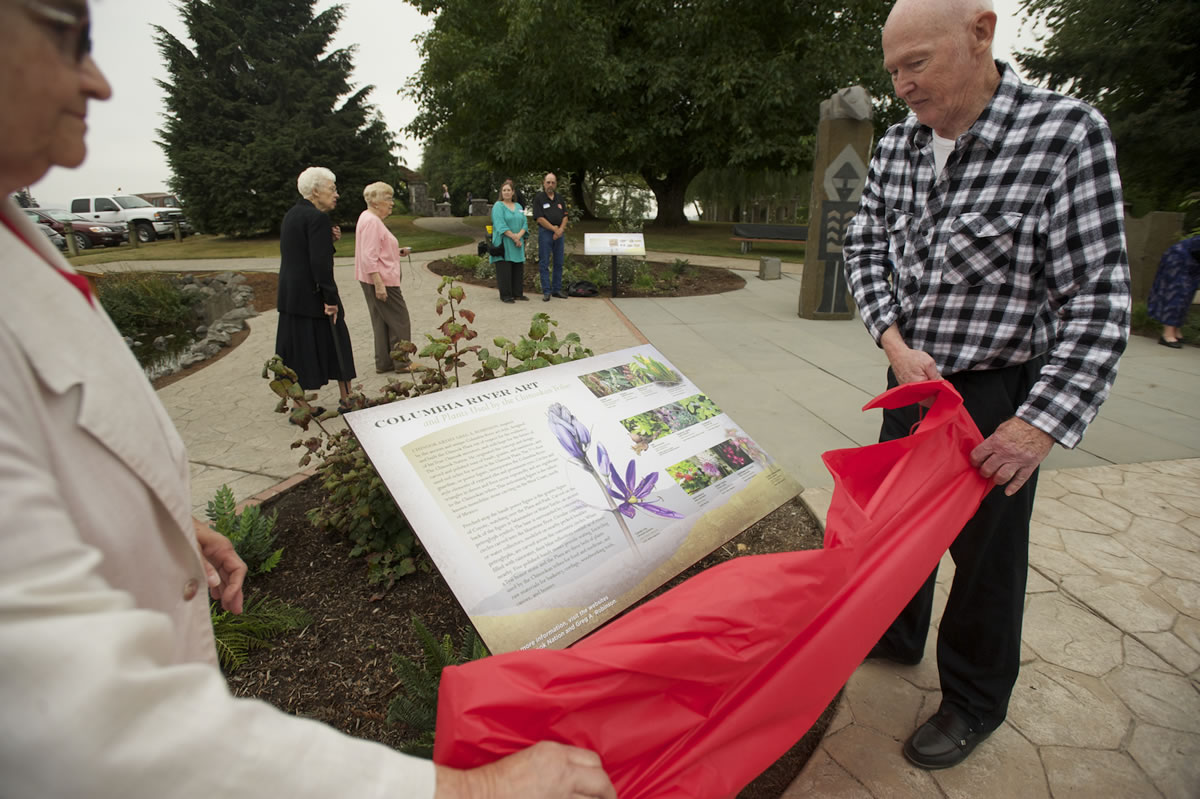WASHOUGAL — The panels honor the people who lived here for thousands of years.
They represent the art and tools of the Chinookan people, the plants they used and the places along the Columbia River that different groups called home.
But it wasn’t all about images and text. Striking an elk-skin drum, Sam Robinson sang a traditional welcome as people gathered on the grounds of the Port of Camas-Washougal.
Then three interpretive panels were unveiled by project participants. The panels supplement the tribally inspired artwork done earlier in Chinook Plaza, which is part of the Parkersville National Historic Site.
As Ceil Kirchner noted during the presentation, “This has been a heritage place for a number of different groups.”
“We wanted something for the traditional people who have lived here from time immemorial,” she said.
Kirchner, a member of the Parkersville National Historic Site’s advisory committee, thanked all the volunteers, heritage groups and agencies that were part of the six-year project.
Later, Robinson thanked them as a member of a Chinook Nation that has been on a much longer quest for tribal recognition.
“As we battle for federal recognition, we are blessed that people want to know more about us,” Robinson said.
When people are told that the Chinook are not a federally recognized tribe, “their jaws drop,” he said.
“They say, ‘You’re the most written-about tribe in the Northwest,'” Robinson said.
One of the new panels shows plants such as camas lily, salmonberry and wapato that were used for food and medicine, as well as cedar, which provided material for such items as baskets.
Another panel shows examples of stone tools and images of some of the artwork that was carved into rock faces in the Columbia River Gorge.
The other panel outlines the last 200 years of history of a prominent local Chinookan family, going back to about 1800.
Tom Vogt: 360-735-4558; http://www.twitter.com/col_history; tom.vogt@columbian.com.




